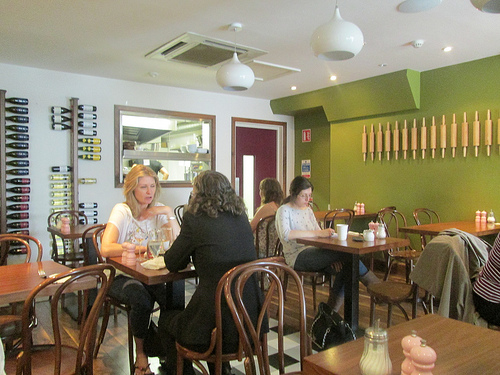4 Ways to Keep Track of Restaurant Food Costs
It’s no secret that a large part of expenditure of running a restaurant is the cost of food. With food prices continuing to rise, it’s critical that every restaurant manager knows effective ways to keep track of restaurant food costs.

It’s no secret that a large part of expenditure of running a restaurant is the cost of food. With food prices continuing to rise, it’s critical that every restaurant manager knows effective ways to keep track of restaurant food costs.
Here are 4 ways to keep food cost tracked.
1. Forecasting of sales
Sales forecasting is essential for the financial health of every restaurant. Ordering, prepping and keeping food wastage to a minimum can all benefit from it. Trends in sales go beyond weekly sales and include holidays and special days such as Valentines. Weather also plays a part as does competitor activity.
2. Goal Setting
Setting goals for ideal food cost and then comparing that against actual food cost allows for improvements by both buyers and employees. Controlling waste and minimising it is essential to keep costs down, as is loss and theft in addition to commodity costs.
3. Employee Training
Establish a process for new employees to add value when it comes to keeping food costs down. Do they know your menu inside out? Are they able to answer all questions from guests and use the point of sale well enough to prevent mistakes? Chefs and cooks need training in portion control and measurement for recipe following. Watch out for those who over-portion and coach them.

4. Employee Meals
Most restaurant businesses provide discounted or free meals for employees. Ensure that there are limits on how many free meals or discounted items are available. Also keep an eye on discounted food being served to visiting family and friends of staff.
By keeping a close eye on what’s coming in, what’s going out and what’s being thrown out, a restaurant manager can improve food usage and decrease costs. Another area to watch is inventory where food can be wasted without good inventory policies and practices in use. Inventory should be classified as ‘money on the shelf’ and food not used or stolen is in effect, money down the drain. To handle this:
- Establish a policy for first in first out to prevent waste and ensure freshness
- Implement inventory financial goals
- Track inventory levels, they should be close to each other each period
- Implement a change of inventory responsibility twice a month or so. Your team will be better equipped/trained and it will also keep honesty in place.
The practice of keeping track of restaurant food costs can make or break a restaurant at worst, or help it to grow and flourish at best.



